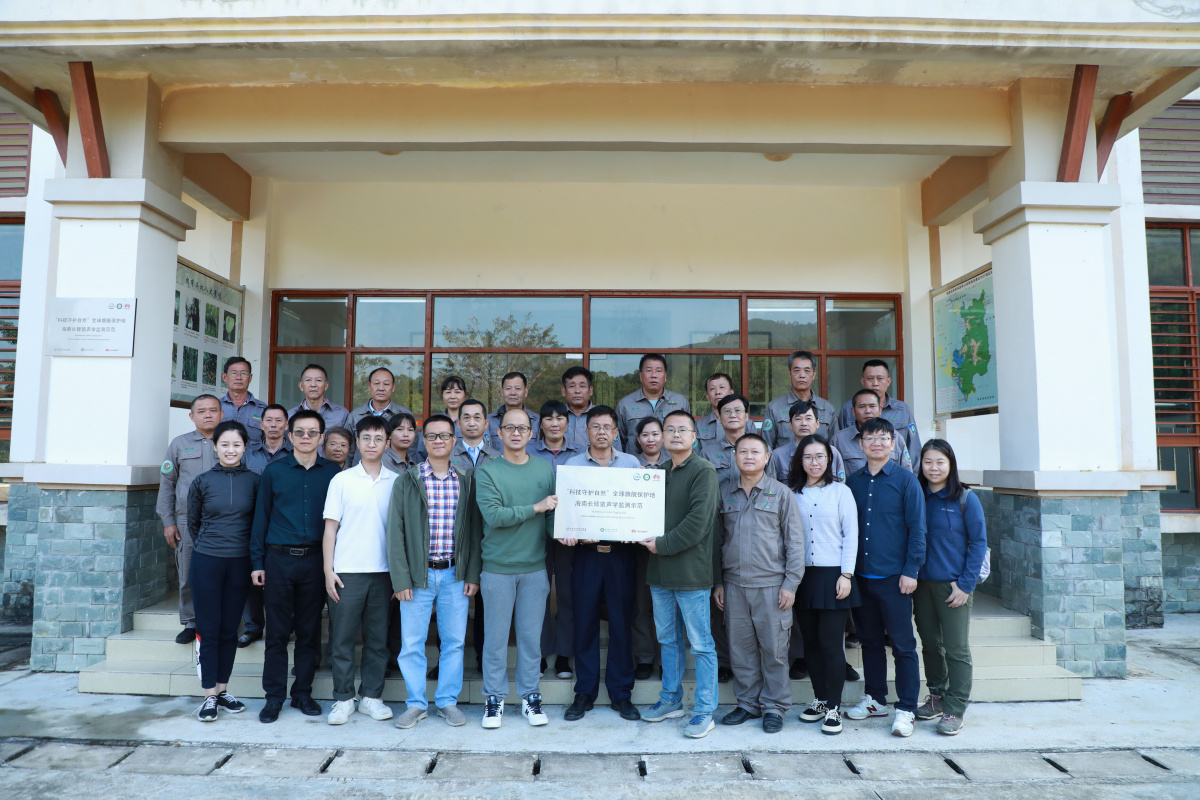News When ICT meets the Living Community of Human and Nature: an innovative path to Hainan gibbon conservation
The Hainan gibbon (Nomascus hainanus), the world’s rarest primate and the most endangered among all gibbon species in the world, rated as Critically Endangered by IUCN. With less than 10 individuals remaining in the 1980s, the population has risen to 35 in 2021. The conservation of Hainan gibbon has taken an innovative, nature-based and technology-enabled path in line with local conditions.

Launch event - Tech4Nature acoustic monitoring of Hainan Gibbon, China
Photo: IUCN China
On 29 November, the launch event of Tech4Nature on Acoustic Monitoring of Hainan Gibbon was held in Haikou, Hainan Province. The event was sponsored by the Hainan Institute of National Park (HINP) and IUCN, co-organised by Huawei. Mr. Yan Zhang, Country Coordinator of IUCN China; Mr. Kang Chen, Deputy Director of Hainan Provincial Forestry Bureau and Administration of Hainan Tropical Rainforest National Park; Mr. Yanfei Tang, Executive Director of HINP; Jichao Wang, Dean of the School of Life Science of Hainan Normal University presented the event. During the event, the national park, nature-based solutions, Hainan gibbon investigation and technologies for nature were in the spotlight. In addition to the in-house event, a field trip has also been organised.
Tech4Nature is a global partnership to scale up success in nature conservation through digital technology innovation. Created by IUCN and the Huawei Tech4All programme, Tech4Nature is designed as an open partnership to apply and promote digital solutions for fair and effective protected areas.
Aiming to enable more than 300 protected areas worldwide to evaluate their conservation success through the IUCN Green List Standard by 2023. This growing partnership will provide guidance on the appropriate use of technology in area-based conservation and directly involve the ICT industry sector in supporting nature conservation.
As the most important flagship species on Hainan Island, Hainan gibbon is currently only found in the Bawangling Zone of the newly established Hainan Tropical Rainforest National Park (RFNP).
The Tech4Nature project in China is working with HINP to collect and analyze acoustic monitoring data of Hainan gibbons through new technologies such as acoustic monitoring, data transmission, cloud storage and AI, which will provide a new approach to the conservation of Hainan gibbon.
Mapping the population and habitats of the Hainan gibbons is the most fundamental task for Hainan gibbon conservation. During the workshop, HINP and the Bawangling Branch of TRNP signed an agreement to develop a professional monitoring team for Hainan gibbons. In addition, the 2021 Hainan Gibbon Survey was launched during the event. It primarily focuses on habitat and population conditions, and provide data to support conservation efforts. Based on the 2020 survey results, rangers have found two new-born gibbons in March 2021. “Timely information available plays a key role in developing conservation actions”, said Mr. Kang Chen.
In addition to periodic monitoring by rangers and daily patrols, biodiversity conservation and protected area management also require the deployment and application of technology-based integrated monitoring techniques and systems.
“Technologies can significantly improve the accessibility and effectiveness of data and information, and can also provide unprecedented possibilities, opportunities and innovations for nature conservation. Conservation will hopefully become more efficient, effective and fun”, said Mr. Yan Zhang.
Science and technology have become increasingly prominent in building ecological civilisation, conserving biodiversity and tackling climate change. Human and nature have long been closely related in a shared living community. The conservation of Hainan gibbons is just a small example of the thousands of technology-based or empowered conservation actions, which, the Tech4Nature partnership wants to shed light on and develop even further.



